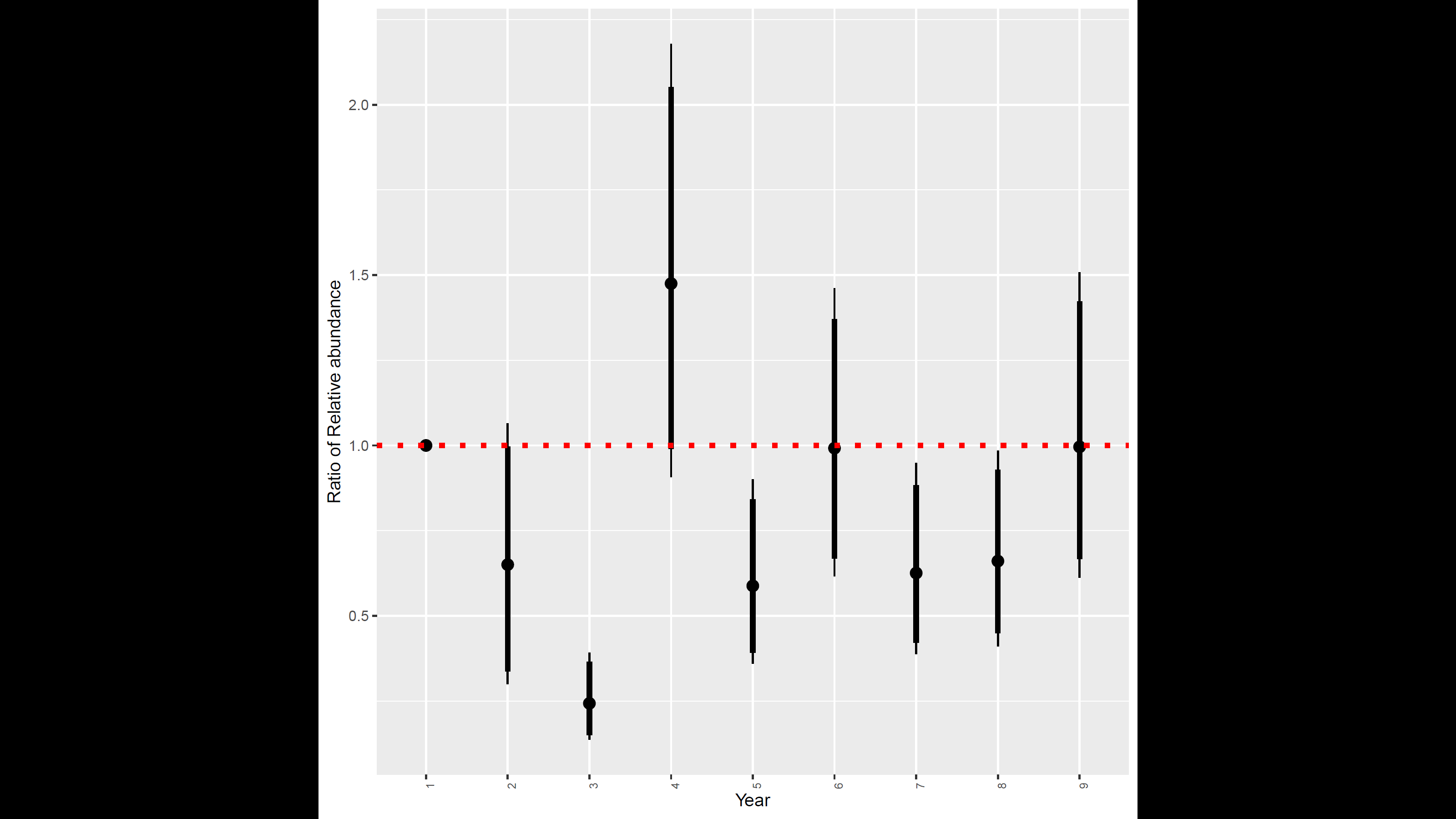Diana is co-author on the paper: A guide to state–space modeling of ecological time series, which was published in Ecological Monographs.
https://esajournals.onlinelibrary.wiley.com/doi/full/10.1002/ecm.1470
Abstract: State–space models (SSMs) are an important modeling framework for analyzing ecological time series. These hierarchical models are commonly used to model population dynamics, animal movement, and capture–recapture data, and are now increasingly being used to model other ecological processes. SSMs are popular because they are flexible and they model the natural variation in ecological processes separately from observation error. Their flexibility allows ecologists to model continuous, count, binary, and categorical data with linear or nonlinear processes that evolve in discrete or continuous time. Modeling the two sources of stochasticity separately allows researchers to differentiate between biological variation and imprecision in the sampling methodology, and generally provides better estimates of the ecological quantities of interest than if only one source of stochasticity is directly modeled. Since the introduction of SSMs, a broad range of fitting procedures have been proposed. However, the variety and complexity of these procedures can limit the ability of ecologists to formulate and fit their own SSMs. We provide the knowledge for ecologists to create SSMs that are robust to common, and often hidden, estimation problems, and the model selection and validation tools that can help them assess how well their models fit their data. We present a review of SSMs that will provide a strong foundation to ecologists interested in learning about SSMs, introduce new tools to veteran SSM users, and highlight promising research directions for statisticians interested in ecological applications. The review is accompanied by an in-depth tutorial that demonstrates how SSMs can be fitted and validated in R. Together, the review and tutorial present an introduction to SSMs that will help ecologists to formulate, fit, and validate their models.


